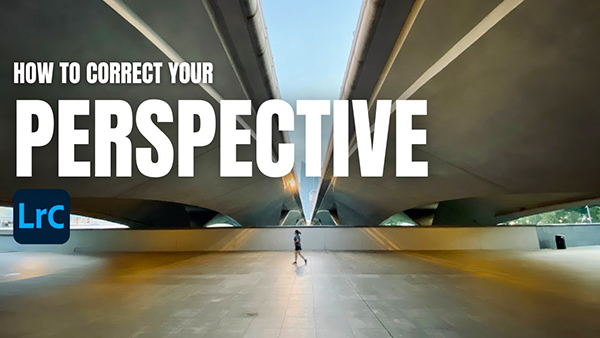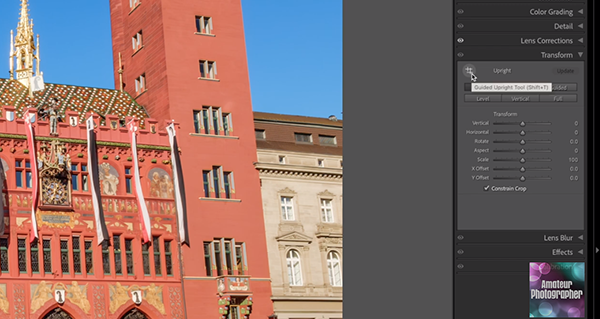
Outdoor photographers often confront a frustrating issue when forced to point the camera up or down because their vantage point doesn’t enable them to shoot head on. The result is an image with unwanted converging lines.
But never fear because this quick-and-easy tutorial demonstrates how to align vertical objects and fix other distorted photos with off-kilter angles. This very helpful lesson comes to us from the Amateur TV channel—the world’s oldest consumer photo magazine that’s been published continuously since 1884.
Distracting vertical lines occur most commonly in urban photos with tall buildings that appear to tilt inwards toward the top. But landscapes images are not immune to this vexing concern, like in forest scenes with tall tree which will also converge.
Instructor Rod Lawton is a post-post-processing expert and he demonstrates a straightforward procedure in barely five minutes that that will bring perfect balance to skewed photographs for a more realistic look. His weapons of choice are the powerful tools located within Lightroom’s Transform panel.
Lawton illustrates all this with architectural images, but the technique he provides work equally well with other types of photos with odd perspective issues. Before jumping into the necessary steps, he offers this important note: “Be sure to check Lightroom’s Lens Correction panel to make sure it has applied the appropriate Profile.”
He notes further that if you’re working with a Jpeg file, “chances are that lens corrections were automatically applied in-camera.” With these preliminary suggestions out of the way, Lawton pulls up Lightroom’s Transform panel, describes the various a perspective control options available, and explains how they workwith different types of images. Then he walks you through the simple steps required to apply these tools in practical ways.

The typical problem occurs in scenes with converging vertical lines, and these are super easy to straighten. But what about photos in in which both horizontal and vertical elements are skewed. No problem here either.
After the lesson concludes and you update your Photoshop workflow accordingly, take a look at Lawton’s instructional YouTube channel to learn the other tricks he has up his sleeve.
And on a related composition note, don’t miss an earlier tutorial we featured with another pro who says to “avoid the Rules of Thirds because it’s bad advice.” And then he demonstrates better methods that you should employ instead.





